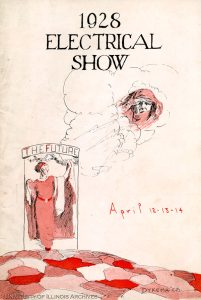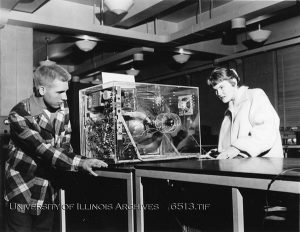
In 1907, students from the Department of Electrical Engineering participated in a campaign to raise funds to build a memorial to Robert Fulton in New York City.[1] In order to contribute to this effort, Electrical Engineering students organized exhibition that displayed their work. Attracting 1,600 visitors and raising $250 to contribute to the Fulton memorial, the event would serve as the first Electrical Show. [2] As it expanded each year, the show was soon considered the “acme of development in electrical apparatus and experiments,” with its exhibits ranging from displays of practical items to spectacular and literally shocking devices.[3] While some of the exhibits illustrated futuristic items that could one day transform daily life, others sought to simply demonstrate how such inventions as the telegraph worked or to display new and improved household items. Programs from the 1910 and 1915 Electrical Shows mention exhibits on wireless telegraphy, vacuum cleaners, electric pianos, an “Electric Cafe,” and “the Wonder Tube”–the longest light on the university’s campus. A promotional video for the 1938 Electrical Show also promised to feature “man-made lightning,” “electrons at work” and a “kiss-o-meter”:
Continue reading “The Electrical Show: Inventions of the Past, Present, and Future Revealed”
